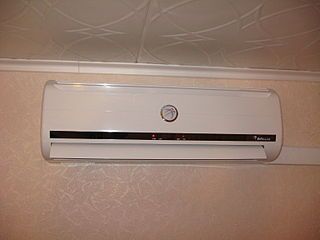From Guest Blogger Joel Smith: Five Ways Energy Efficiency Can Improve Indoor Air Quality

However, were you aware that most bacteria, allergens and mold are sharing that indoor space with you? No, we didn’t think so. Worse still, did you know that pollution levels inside the house are substantially more than the pollution outdoors? We are talking as high as 100 times more indoors than outdoors in some cases.
So if we are going to be spending most of our life indoors then what can we do in order to help reduce pollution levels? Here are 5 tips for you to get stuck into.
Improve your filtration
Air contaminants are one of the major factors of pollution and the pollution level in your home can be greatly decreased just by improving your filtration. To do this you should think about upgrading your filter to one that can collect more air contaminants. Although this step is a temporary solution you should notice the difference after a few days.
Take care of heating, ventilation and air-conditioning systems
The importance of keeping air circulating in your home is a fundamental step to better air quality, but it can also help you to save money in the long run. You see every American tends to spend around $2,000 each year in order to either cool or heat up their homes and apartments, so keeping on top of your systems is a key part to saving money and keeping air quality high.
With the proper maintenance you can reduce air pollution by replacing filters, having a professional come out and service any ventilation, cooling or heating systems, and generally increase efficiency.
Check your home is properly ventilated
Anyone can perform this task but in order to make sure that fans and filters are all doing their job its worth calling in the experts to check for problems that could lead to health problems. This is when you need to hire the best mold removal company in Trenton, Air Treatment System. They can come out to you and monitor your air quality and then help you maximise the opportunity to filter out all of the contaminates.
Remove materials that contribute to air pollution
Anything from smoking to dust can trigger off health issues, especially those with sensitive allergies or asthma problems and conditions. Smoking in particular is not only bad to a person’s long-term health but it is the biggest significant factor of air quality indoors.
To keep your home pollutant free don’t smoke and don’t allow others to smoke either because carcinogens in the smoke residue don’t disappear once the smoker has, oh no, they can last for a long time.
Add humidification
Finally, our last piece of advice is to add some humidification to your home, especially for the winter periods. You see, cold air can pose problems which include damp and moist air which can often end up in a build-up of mold. To help kick this humidifier can cleanse the air but also turn up the heat in your room. This way you don’t need to put the heating on, so you get to save money and benefit from the cleaner air and warm temperature of the humidifier.

Joelsmith,
I like your blog. It is correct that most US homes are using inside air over and over again.
Changing filters more often will help but you are still using the same air.
I suggest you talk to the heating installer.
A heating or cooling unit has an incoming and outgoing airstream.
On the incoming stream 10% of the air needs to come from outside with a vent installed and connected to incoming air stream. It is a small diameter pipe who by the stream of the larger incoming pipe will use under pressure and mix in fresh air! I have done that!
So when the air is going trough the heating or cooling unit 10% is already fresh air. Doing so every 24 hours all cubic yards of air in your home will be filtered and refreshed.The cost to do that is minimal.
Also think about a solar roof and this one will grow your wallet to!
Good luck!
May I point out an error. You need to de-humidify air rather than humidify it in winter – otherwise you end up with damp walls, mouldy curtains, and puddles on your window sills. The problem is greatest in modern houses with a relatively airtight construction.
The most cost effective ways to reduce humidity are mechanical heat recovery ventilation, and solar air heaters.
Heat recovery ventilation units use warm damp exhaust air to preheat dry outdoor ventilation air with less heat loss than opening a window.
Solar air heaters heat air on the south side of a home when the sun shines, then use a solar powered fan to pump warm air into the house. This can be done with a DIY design of which there are several on the web. or if you want a more standard aesthetically pleasing result, by using a commercially produced unit.